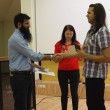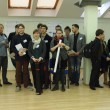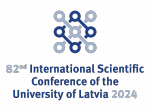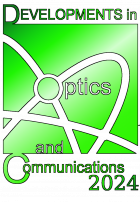
A Brief history
In 2005 University of Latvia SPIE student chapter organized a conference called Development in Optics and Photonics 2005 (or DOP for short) which was predecessor of DOC. About 40 participants took part in DOP representing Latvia, Lithuania, Estonia, Ukraine, Romania, Belarus and USA. Dr. Katarina Svanberg was invited as keynote speaker.The conference Developments in Optics and Communications has been evolving successfully for the past years. The conference traditionally features invited and contributed talks in five sections:
- Biophotonics
- Laser physics and spectroscopy
- Optical materials and phenomena
- Optics in communication
- Vision science
Books of abstracts
DOC Riga 2023
For the 19th year in a row, the international conference "Developments in Optics and Communications 2023" was held. This year a hybrid type of attendance was possible with both on-site and on-line participants. More than 50 participants participated in the conference to present the latest developments in the science fields of biophonics, visual science, laser physics and spectroscopy, optical materials and phenomena, optics in communications. Six invited talks complemented oral and poster presentations of students and young scientists.We would like to express our gratitude to all the speakers, guests and conference chairs, organizing and scientific committee for the amazing two day conference!
DOC Riga 2019
This year, 11th and 12th of April, for the 15th year in a row, the international conference "Developments in Optics and Communications 2019" was held, bringing together students and experts from science fields such as biophonics, visual science, laser physics and spectroscopy, optical materials and phenomena.
More than 50 participants from all over the world participated in the conference to present the latest developments in the above-mentioned sectors. In parallel with the presentations, laboratory works were organized in laser physics and spectroscopy in collaboration with “LaserLab Europe”.
The conference was opened by the latest developments in biophotonics, and Stefan Andersson-Engels (Ireland) and Dmitrijs Bliznuks (Latvia) were invited as key guests in this section. The biophonics section was opened by enthusiastic and always smiling Stefan Andersson-Engels, who introduced the participants to the achievements in the diagnosis of lung health in newborns using the oxygen gas and water vapor NIR spectroscopy method. Next, Dmitrijs Bliznuks informed participants and guests about the success of the development of a mobile and portable skin cancer diagnostic system developed at the University of Latvia.
The next section of Optical Materials and Phenomena looked at the various achievements in material and various phenomena used in optical systems. Invited speaker Arturs Bundulis introduced the participants to a new organic gas sensor that is immune to electromagnetic fields, sensitive and above all to be manufactured inexpensively. Such sensors can be used, for example, for whispering gallery mode resonators, hetero-core and waveguide Mach-Zehnder interferometric devices.
The second day of the conference was opened with the Vision Science section, during which the invited speaker, Antonio M. Morgado (Portugal), introduced students, guests and participants to the openness of the eye and its benefits in terms of human structure. The eye makes it possible to see and visualize the vascular and nervous system and understand their structure thanks to corneal metabolic imaging and optical coherence tomography.
The fourth and final section of the conference, Laser Physics and Spectroscopy, outlined the research aspects and their current situation regarding lasers and spectroscopy. The section was opened by Aigars Atvars, a scientist at the University of Latvia, presenting the participants with an in-depth course in quantum mechanics and atomic-level spectroscopy. Understanding quantum mechanics allows us to better understand and explain physical phenomena at the atomic level.
During the conference, participants were able to learn more about soft skills and develop them. Tatjana Pladere, the organizer of the conference and doctoral student at the University of Latvia, shared her experiences and taught participants to work effectively in the team.
During the event, the participants were able to test their vision health thanks to our supporters of the Latvian American Eye Center (LAAC), which introduced the most popular eye diseases, their causes and possible therapies within the Vision Science section.
At the end of the conference we were honored to present the awards for the best oral presentation and the best poster presentations to participants: Balys Momgaudis and Dan Buozius.
Let’s meet during DOC Riga 2020 next year!

Stefan Andersson-Engels explaining how spectroscopy may help improving the care of infants at risk

Dmitrijs Bliznuks telling about new ways of assessing the skin health using cloud-based technologies

Arturs Bundulis presenting the benefits of innovative gas sensors

Antonio M. Morgado explaining the findings in optical coherent tomography

Aigars Atvars telling about the principles of quantum mechanics

Conference participants discussing the implementation of attention getters

Latvian American Eye Center representative demonstrates the eye pressure assessment device

Matiss Lacis and Balys Momgaudis

Matiss Lacis and Dan Buozius

DOC Riga 2019 participants
DOC 2016
Each topic also featured an invited speaker that shared their experience with the young scientists. This year from Latvia – Dr.Mara Reinfelde talked about “Practical application of holography” for the Laser Physics and Spectroscopy section, University of Latvia OSA student chapter advisor Dr.Florian Gahbauer gave an amazing speech on the topic of “Magnetic sensing with nitrogen-vacancy (NV) centres in synthetic diamond”. The conference organizers from both SPIE and OSA student chapters had also invited speakers from Israel and Finland to talk about their research.
Dr.Igor Meglinski was invited to tell students about “Cloud Monte Carlo for the needs of biomedical optics” for the biophotonics section and Prof. Zeev Zalevsky from Israel gave a speech about “Super resolved and extended depth of focus concepts for remote and ophthalmic imaging systems” for vision science students. Students were so engaged in Prof. Zalevsky’s speech that it took almost an extra 20 minutes just to answer all the questions and give in-depth explanations of his work.
Traditionally the best poster and the best oral presentation are given an award for their work funded by University of Latvia OSA student chapter, and this year was no exception. The best speech award was given to Janis Smits for his talk “Deconvolution - a tool for enhanced resolution magnetic images” and the best poster was presented by Andris Antuzevics (“Structure of Gd3+ ions in oxyfluoride glass ceramics containing fluorite crystallites”).
This year was special also because of the conference venue. The conference was held in the newly built Academic Center for Natural Sciences of the University of Latvia (ULACNS) in Tornakalns. ULACNS opened its doors on September 7th, 2015. It was hoped that relocating to the new UL ACNS would create unprecedented opportunities for cooperation between scientific fields and study programs. And indeed it was an amazing experience to listen to talks and admire posters in the new building. The premises on the 7th floor provided an amazing view over Riga for every attendee to enjoy. The staff were also kind enough to allow conference guests to enjoy the view from the rooftop.
The conference was not only an event to present one’s work and listen to others, but also a way to meet fellow physicists in an informal environment. Since the best collaboration ideas are usually born while discussing various topics outside the conference rooms, this year a friendly paint-ball tournament for the conference participants was held.
We would like to thank members of the SPIE and OSA student chapters from the University of Latvia for all the hard work, “OPTEK” for their financial support, and Igor Meglinski as well as Zeev Zalevsky for coming to Latvia and giving their awesome lectures.

1

2

3

4

5

6

7

8
9
DOC 2015
From the 8th to 10th of April 2015 the international conference “Developments in Optics and Communications 2015” (DOC Riga 2015) was held in Riga for the 11th time. It gathered many brilliant young scientists from 8 different countries – Latvia, Poland, Denmark, Russia, Armenia, Germany, Italy and Georgia – to share their scientific work.For every subsection represented the attendees had an opportunity to hear a speech by an experienced scientist in the field; invited speakers featured scientists from Latvia as well as abroad.
List of invited talks:
- “The human eye as a robust optical system” by Prof. Dr. Pablo Artal (Laboratory of Optics, Murcia University, Spain)
- “Organic solid state lasers” by Dr. Aivars Vembris (Institute of Solid State Physics, University of Latvia, Latvia)
- “How do optical properties affect light transport in tissue, and which parameters do you need to care about in the lab” by Prof. Dr. Lise Lyngsnes Randeberg (Norwegian University of science and Technology, Norway)
- “Applications of airborne optical remote sensing techniques for environmental assessment and monitoring” by Dr. Dainis Jakovels (Institute for Environmental Solutions, Latvia)
- “Nitrogen Vacancy Centers in Diamonds for Sensing and Quantum Information” by Dr. Florian Gahbauer (Faculty of Physics and Mathematics, University of Latvia, Latvia)
- “Visian ICL: intraocular collamer lens for refractive correction” by Evija Gulbinska (Latvian American Eye Center, Latvia)
- “So, I woke up today, and what now?” by Jurita Kruma (Digital tribe WWWOLF, Latvia)
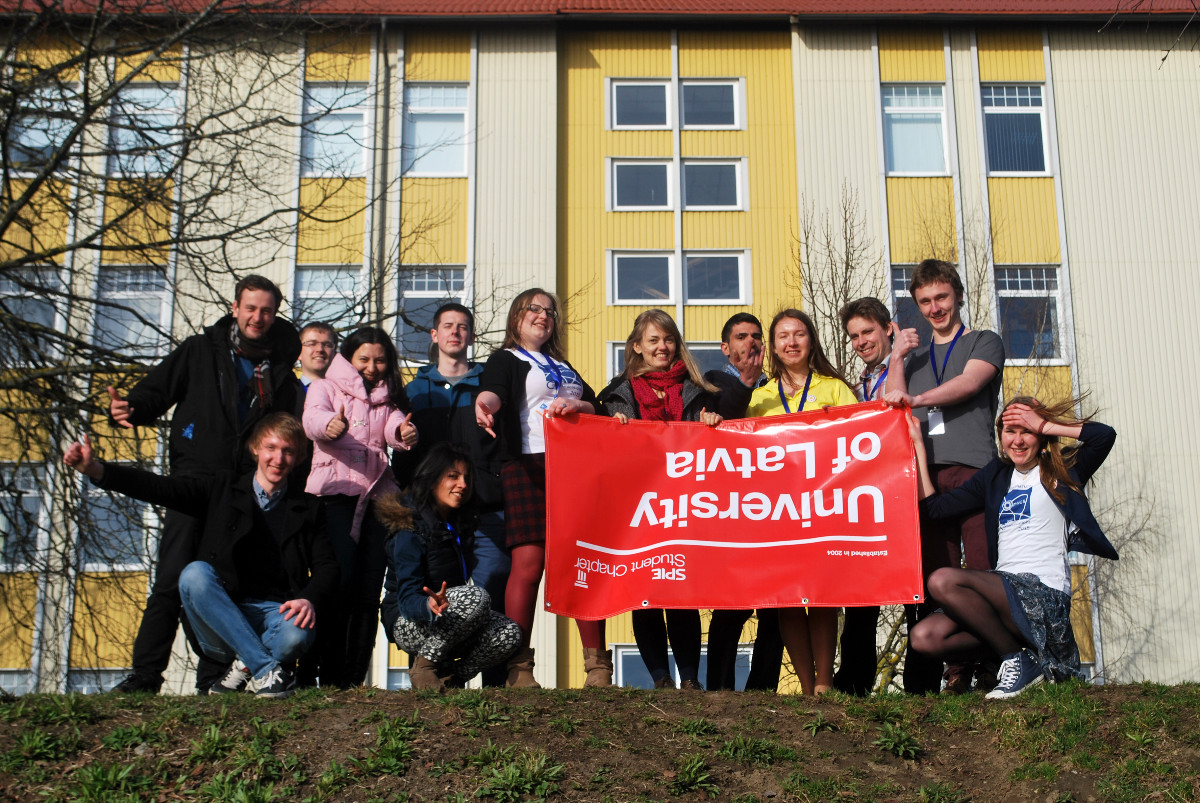
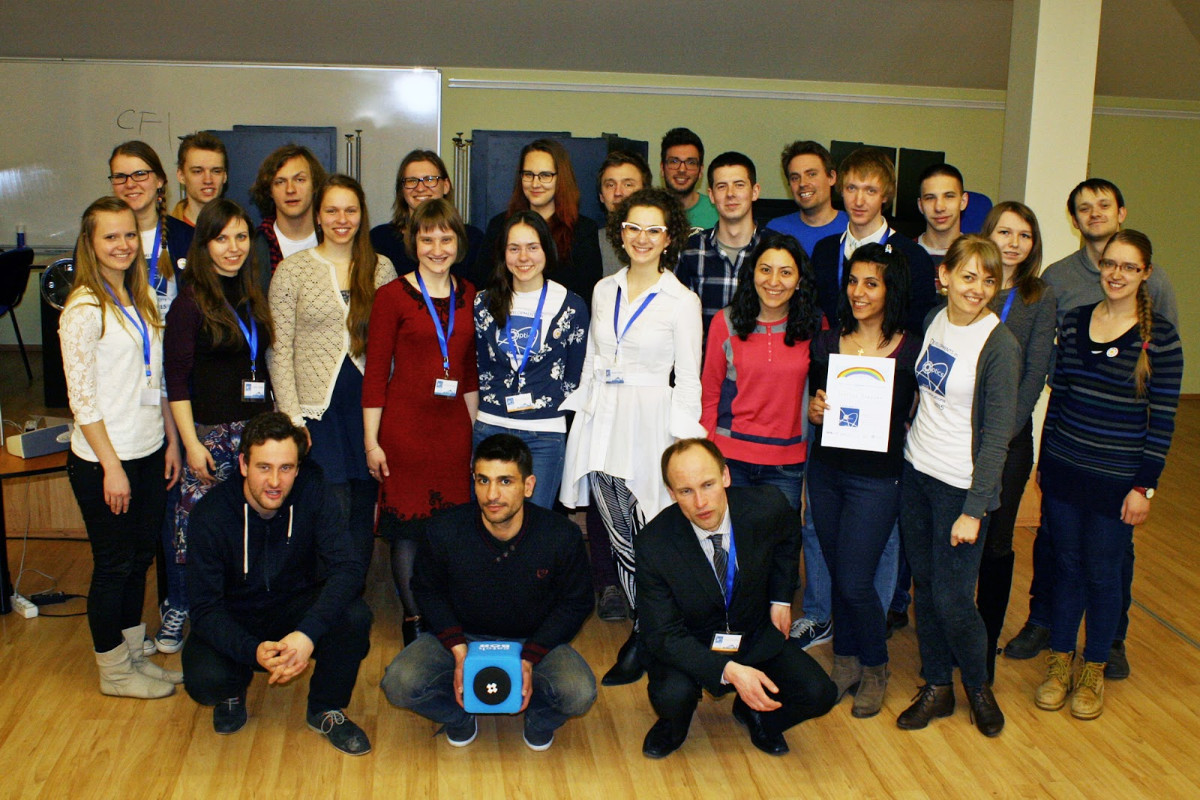
DOC 2014
To further the cooperation between European research facilities and involvement of young researchers, the 10th International Young Scientist Conference “Developments in Optics and Communications” was held in synergy with the Laserlab III Training School for Potential Users “Laser Applications in Spectroscopy, Industry and Medicine”.The event featured invited talks by distinguished European scientists as well as 85 contributed talks and poster presentations by students and young scientists from over 15 countries.
Laserlab III Training School was a part of the Integrated Initiative of European Laser Research Infrastructures II - LASERLAB-EUROPE and aimed at providing the information and involvement of potential users from the Baltic / Northern Europe region into the activities of this network. The training school featured laboratory exercises at local research facilities - Institute of Solid State Physics, Institute of Atomic Physics and Spectroscopy, and Laser Centre of the University of Latvia, and a seminar about research opportunities offered by the LASERLAB network. The seminar featured a talk “Laserlab Access initiative: Research opportunities in Europe's leading laboratories” by Dr. Dusan Chorvat (International Laser Center, Slovak Republic).
The event was attended by 127 participants.
List of invited talks:
- "Intense few cycle mid‐IR sources and their applications" by Prof. Jens Biegert (ICFO Institute of Photonic Sciences, Spain);
- "Femtosecond pulses in micromachining of transparent materials" by Prof. Valdas Sirutkaitis (Vilnius University, Lithuania);
- "Semiconductor-based light sources for biophotonic imaging" by Prof. Peter E. Andersen (Technical University of Denmark, Denmark);
- "Photoreceptor directionality and the Stiles-Crawford effects" by Dr. Brian Vohnsen (University College Dublin, Ireland);
- "Silicon Photonics for Tunable Optical Devices" by Dr. Ing. Miķelis Svilans (Central Photonics Institute, Canada);
- "Wavelength filters for all-optical signal processing" by Dr. Oskars Ozoliņš (Riga Technical University, Latvia);
- "Laser safety" by Dr. Margarida Pires (University of Lisboa, Portugal).
DOC2014 registration
Opening Session
DOC-2014 main organizers were local student chapters of OSA and ULSPIE

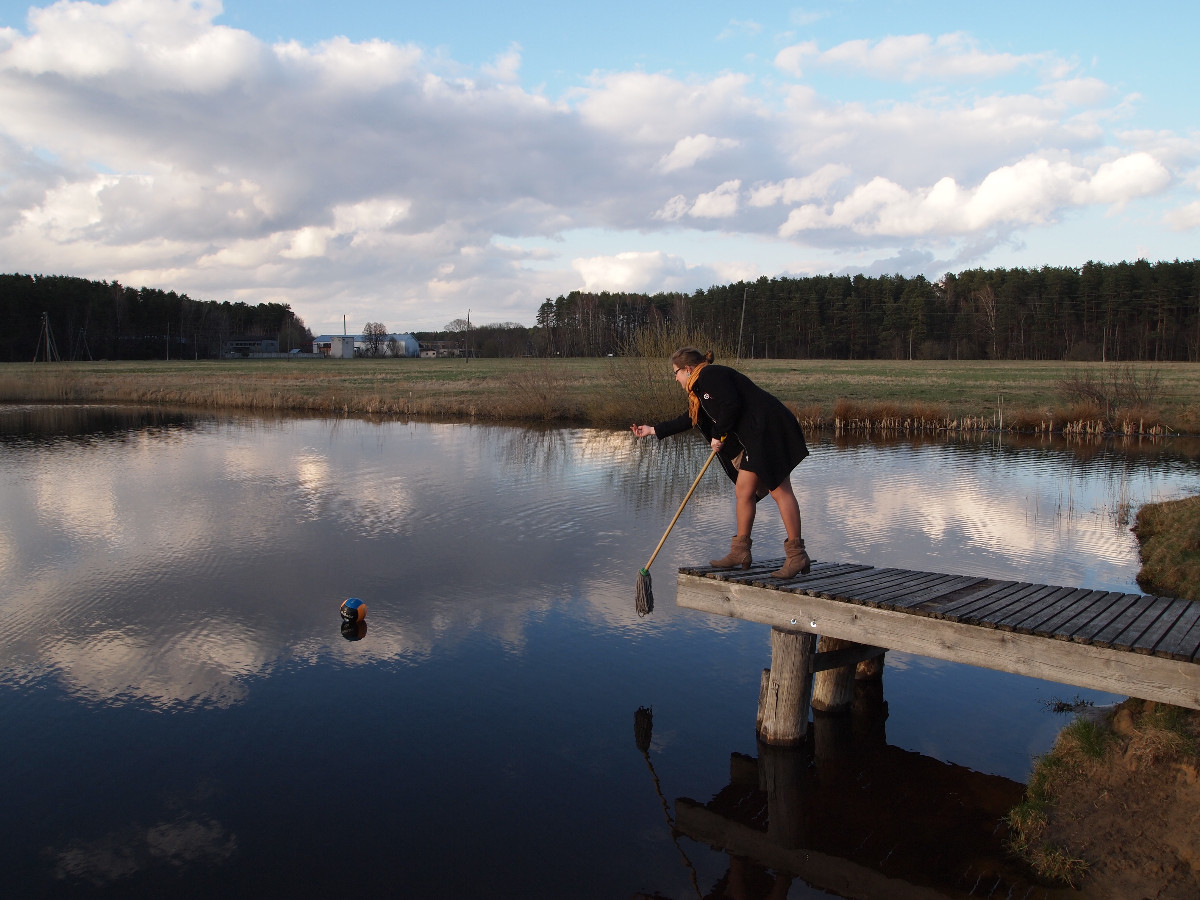
Goodbye Party
Tour to Riga Old town
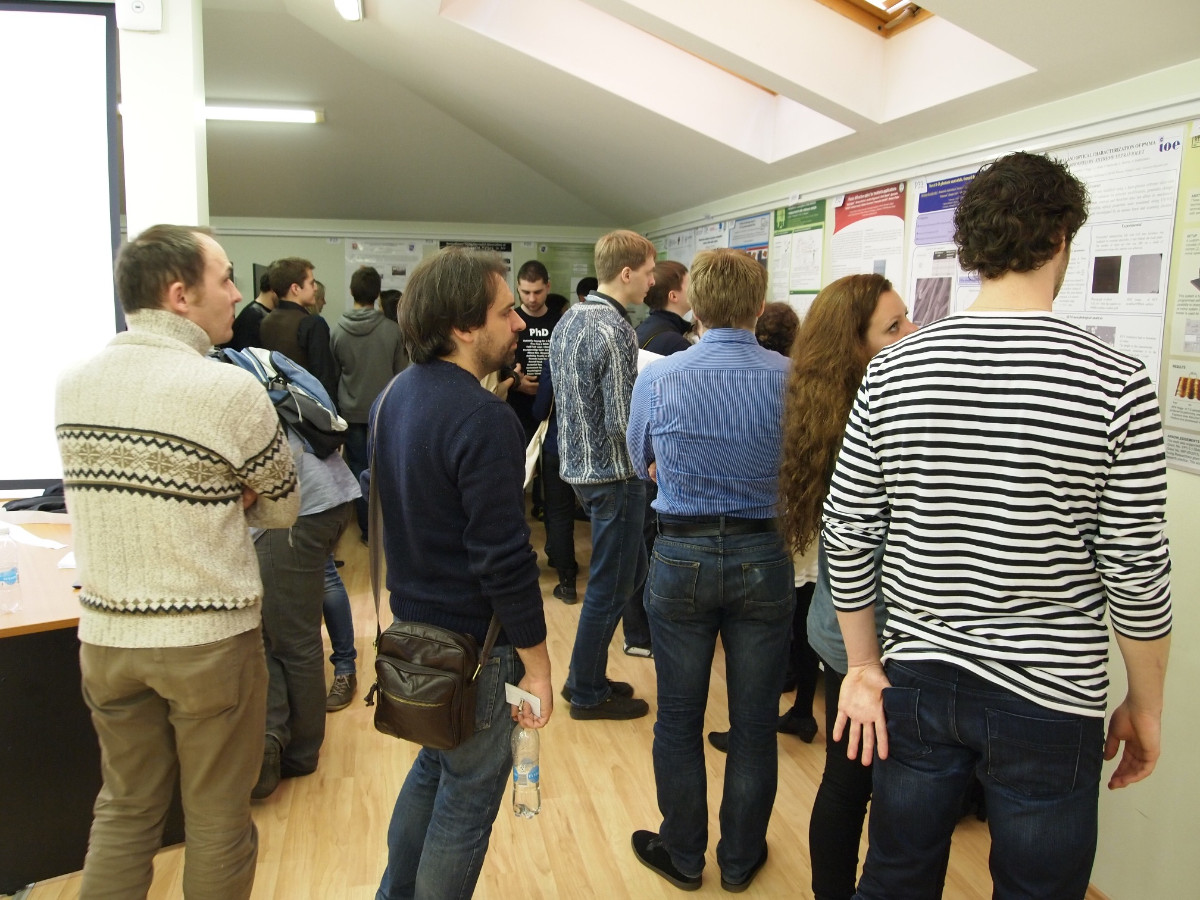
Poster session
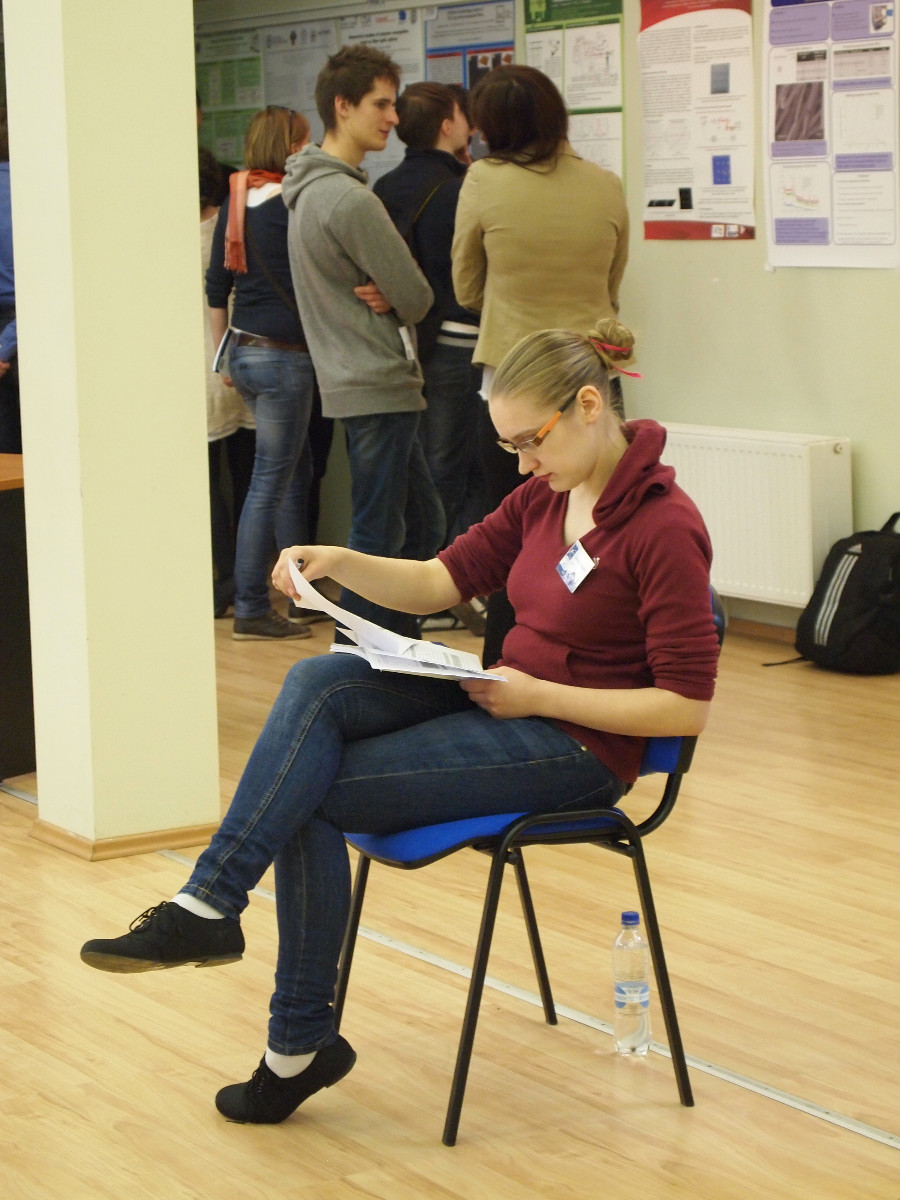

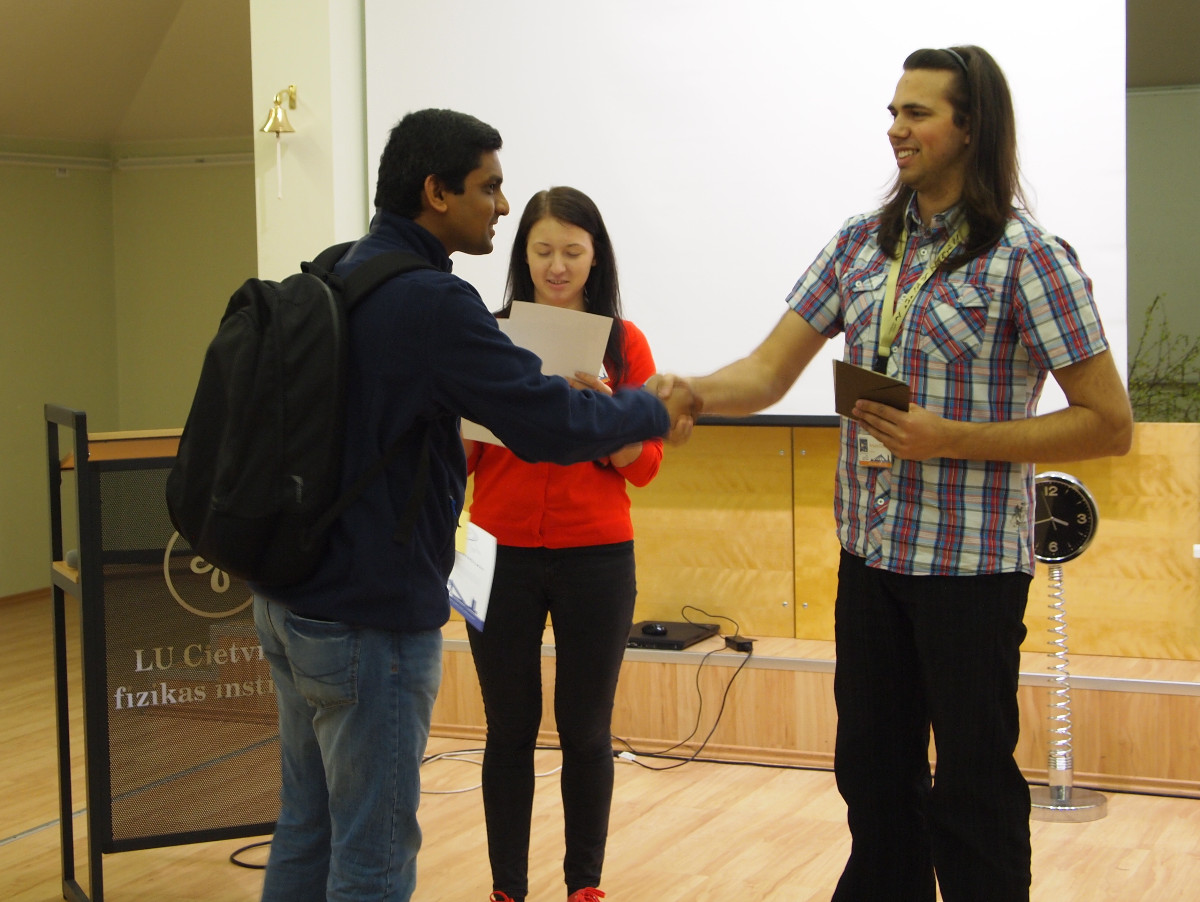
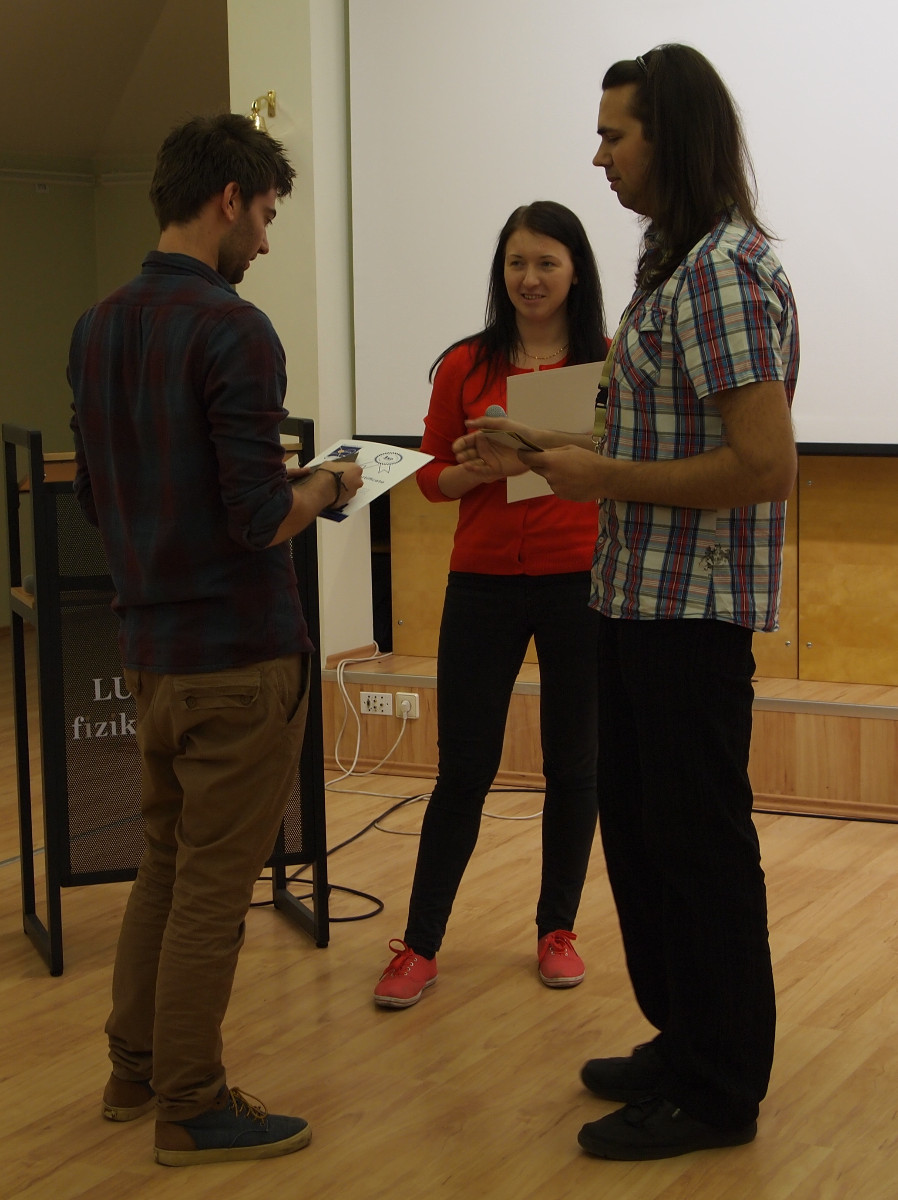


DOC 2013
The 9th Conference DOC in 2013 featured 116 contributed talks and poster presentations. Each conference section featured an invited talk by a distinguished scientist:Biophotonics: Prof. Göran Salerud, University of Linköping, Sweden
Laser physics and spectroscopy: Prof. Gershon Kurizki, Weizmann Institute of Science, Israel
Optical materials and phenomena: Prof. Ifor Samuel, University of St Andrews, United Kingdom
Optics in communication: Dr.Sc.Ing. Jans Jeļinskis, Institute of Telecommunications, Riga Technical University, Latvia
Vision science: Prof. Ivars Lācis, Institute of Optometry and Vision Science, University of Latvia, Latvia

























